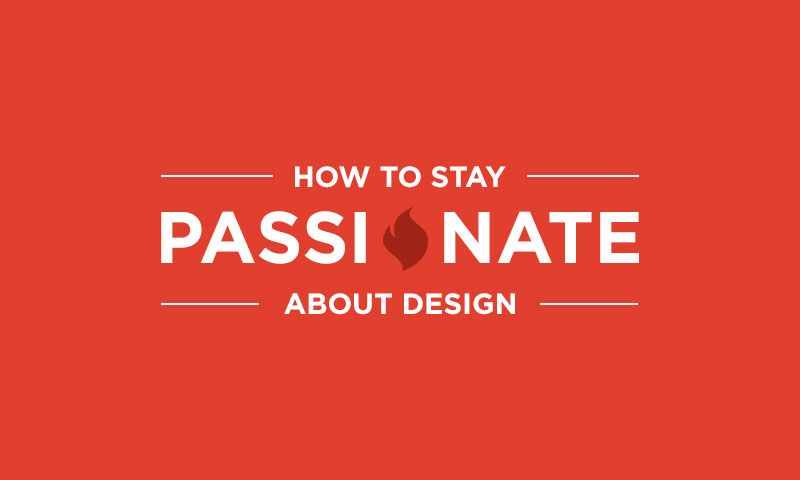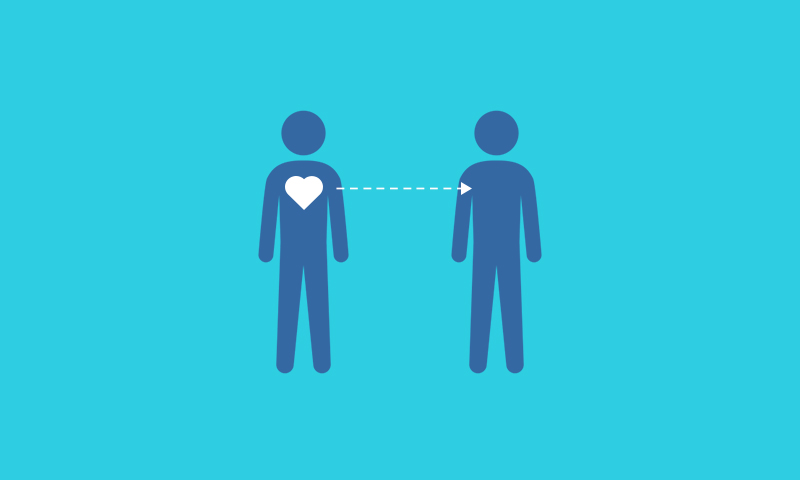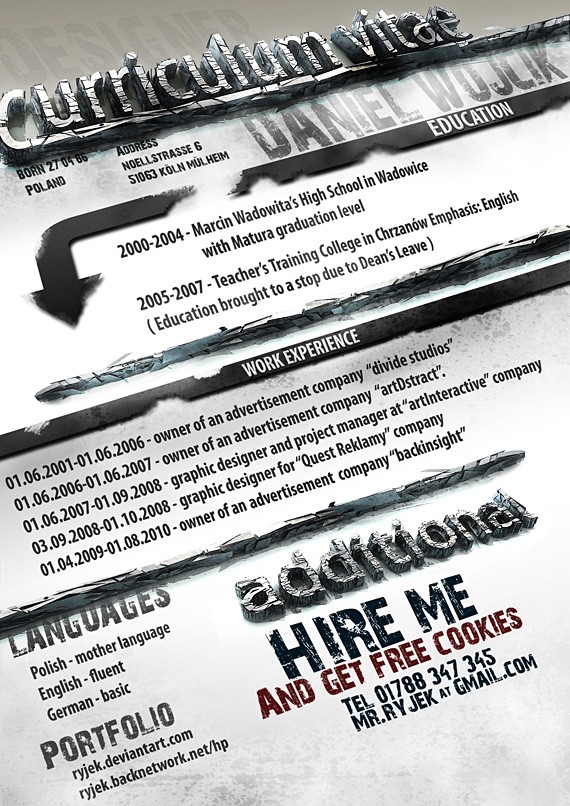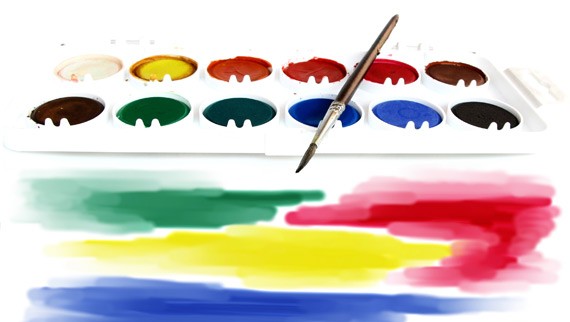We all want to have freedom in our work, so freelancing is the first thought that comes to our minds.
However at the beginning you wonder how to freelance, right? Well, we were asking that question at the start. That’s why we have decided to write this article.
This article will give you the answer to why it is a good idea and how to market yourself and most importantly, create a web design business. That’s what this article is about. We will focus more on the business side of it.
Check the table of contents and scroll to your interest. Ready?
Table of Contents:
- How to Freelance?
- What is Pro Bono Work and Why Should You Embrace It
- Things to Know if You Plan on Working Abroad
- Freelance Contract Basics
- How to Get the Most out of Your Design Degree
- 7 Ways to Stay Passionate about Design
- First Steps in Creating a Web Design Business
- How to Add Value to Your Web Design Business
The Freelance Designer Toolbox
Unlimited Downloads: 500,000+ Web Templates, Icon Sets, Themes & Design Assets
All starting at only $16.50 per month
How to Freelance?
Freelancing is simply working on your own. You take your own directions while starting an honest day’s work. If skills are practiced well, you have a greater chance of becoming successful than staying employed. This then is the topic of this section – making you ready to become a freelancer and the qualities you need to build your own skills.
Why freelancing is beneficial, if not unfavorable?

1) Knowing the benefits of freelancing
Freelancing is beneficial because you get to choose when, where and what you work on. Unlike having a regular job, there is no need for you to prepare, dress-up and worry that you will be late for work. You also get to choose the location of your office and what projects you will be working on. There is freedom with respect to work as it will solely be to yourself. I guess you only have you to please yourself.
Because you choose the people you work closely with, income generated is solely for your own. All you need to have is the impulse to dominate your own business. Income generated from each client is done separately. So once you get a bad client, you can simply hack him out. Why waste your time and effort on people like that?
2) Why freelancing could be unfavorable
Working in a prestigious company will guarantee you regular work while income is stable. But as a freelancer, it is your own discretion to have more clients and work hard for you to experience unlimited income. This is because income earned by freelancers is variable. There could be months where income is high; there could be months were revenues are low. This will even go down if you are lazy and get to choose poor quality clients.
So for you to be an effective freelancer, you need to have patience, diligence, build trust and confidence in your clients to make things work efficiently.
How to sharpen your skills?

The common reason why people tend to improve their skills is paying the bills. Skills are necessary to keep you in business and create a name for you in the freelance industry. In doing this, clients will believe in your competence and will do more projects with you. To keep up with the ever changing world, improving your skills are necessary every now and then. When tasks are done well, more clients will welcome your jobs and everyone around is happy.
1) Find inspiration to motivate you to work.
You may have not noticed it but you have been working hard too long. You tend to be preoccupied with work that you forget to have inspiration. Having inspiration provides you the significance of why you should work. You may also refer to other people who have done great work.
2) Allocate time to learn
Whatever you are doing within a day or a week, allocate time to learn. Learning newer things about your job is easy. You may refer to some reference materials that will help improve your craft. It could be reading magazines, books, blogs and trade journals. You may even opt to go back to school and learn new things. Whatever your decision, it is time to refresh your mind with excellent lessons to enhance your freelancing career.
3) Taking classes to further enhance your skills.
It is a great advantage if you take classes to work on your skills. This is because constant communication in school makes you learn new things and allows you to interact with co-students. A teacher is the best mentor to improve your skills.
4) Work with good people
Learning new things from people who have mastered their craft is also beneficial. People like this know what they are doing. They are good examples and you can begin by merely observing how they perform their skill. Working with them, being part of their team is great. You can also ask them questions if something needs to be clarified.
5) Stay focused and pay attention to your skills
We may have skills that need to be polished. Stay focused on this skill and find ways to improve it. You can work on this skill, practice it till it gets perfect, explore new horizons and be creative. Who knows, it can take you to places like having more clients. And having clients believe in your capacity brings great advantage.
6) Take some criticisms positively
We might think that we have done an excellent job. But sometimes we are engrossed with work that we forget about its own share of mistakes. Whatever the case may be, we need other people’s opinion about our work. Of course, there will always be painful criticisms. But if you take things lightly and on the bright side, we learn and can try to improve the craft.
7) Try new challenges
Things will turn customary when work is started. There may be instances where it becomes boring. When this occurs, you need to assert a certain diversion and explore new challenges. Experiment by trying new methods that can further enhance your skill. For instance in writing, you can experiment blogging, article writing and forums so things will sound interesting.
There may be other elements not discussed here that can further enhance your skills. The above mentioned merely shows you an overview of why your current skills need to be improved. It is important and should be given the utmost value as you need to meet the expectations and requirements of your clients. It is also because you want to establish more lasting relationships with them. And you simply want to build trust and confidence in them. If your freelancing skills are improved, excellent results are achieved.
Now let’s take a look at how you can grow to a web professional.
What is Pro Bono Work and Why Should You Embrace It?
I think pro bono work is something you should do to help you build up a portfolio if you are new to the design business and to give a helping hand to different communities. Pro bono work comes from a Latin phrase and is mostly used to describe professional work delivered voluntarily and without payment or at a highly reduced fee.
Pro bono work is increasing in popularity lately in domains such as marketing, technology and yes, web design. Such a concept offers the specific skills of a professional for free to someone who is not able to afford them otherwise. The main difference between Spec work and pro bono work is that pro bono work is usually for a good cause and even if you don’t get paid, it will definitely bring you awareness and allow you to build up a portfolio and earn experience.
We sometimes feel like helping somebody in need of our services and only ask for a trackback or a modest fee. If you really need to build up a portfolio in the beginning of your design career, doing this kind of work for non-profit organizations or charities is a win-win situation. You help them and, in exchange, you have your work online and will also feel better about yourself. It must feel better helping NGOs battling for disadvantaged children, disaster victims, people with special needs or poor people than doing work for a who-knows-who and not get paid for it, right?
Pro bono also means you have a big responsibility. It means providing fully professional results, not something done while watching your favorite show or while you wait for the train. You will not get paid for it in most cases, but you still need to be professional. Not only for the sake of your portfolio, but also for the sake of the organization you help. Only deliver designs you would normally deliver to people who would pay. I know it sounds difficult and does not make too much sense – why would you submit free high-quality work instead of asking for money for it?
Well, not all of us have a reputation that every company would be glad to fill our pockets for a redesign. When you start working in the business you will understand you need experience – and how else will you get it? I have knowledge of companies looking at people’s previous work and digging for pro bono publico. Why? Because it says a lot about you. It shows your passion for this business. It shows money may be on the low end, but you will always be there for the client and will deliver high-quality work. It shows integrity. It shows just the right qualities.
All design jobs I had when I was a lot younger were pro bono or poorly paid. I mostly did it for fun and to learn. I was proud of my work. I wouldn’t be proud of it today, but back then I was thrilled to be able to deliver friends and local charities their own website. I had no problem working for free and this helped me a lot. Sure, I was not older than 15 and money issues were not pressuring me; fair enough, I give you that one. On the other side, what was in it for me if I was starting to ask for money? Just think about this yourself, would there have been any chance for a 14-year-old without a bit of experience in the business?

Is pro bono equal to volunteerism?
Many think so. I doubt it, however. I also volunteer in my spare time and it is quite different from undertaking pro bono work. The main difference is that while volunteerism means providing something for free, pro bono means acting as a professional, having client meetings, providing drafts, changing, providing another draft, changing again, getting the green light and so on. It is like in the real world. Pro bono is a playground for the real business. It is where we experiment with our techniques and skills. It is where we act as professionals although we are not paid – we only do it because of our desire to help.
Pro bono involves getting familiar with the client, the community you will provide for, their volunteers and their needs. Pro bono for a local charity means getting involved.

Another difference between pro bono and volunteerism is that pro bono leads sometimes to paid work. If the local charity will need a poster, a more professional website or an advertising campaign and will have money for it, whom do you think they will turn to first?
How to choose?
It depends a lot on the area where you live. There are a lot more charities in Chicago then in a small city outside of the Ukraine capital Kiev. But providing you live in an area with lots of them, choosing a local charity or a non-profit organization to do some pro bono for might be tricky.
I heard lots of opinions about doing pro bono from more experienced designers and developers. I think there should be several reasons behind doing it, not only one. You should not only do pro bono in order to improve your portfolio and your skills, because let’s face it, all of us like to help. This is a good way to show your support and make a charitable contribution. If you find at least one of these reasons being enough for you, then you should undertake pro bono work. Why we do it is not as important – charities and organizations will appreciate our help anyway.
The search for a suitable organization might be long. Try to choose something that fits you, something that you like. If you like dogs, you will most likely be more excited about doing a website for an animal shelter than for an Elderly Home. Keep in mind that money is out of this equation and the only thing that can make you run and keep you still wanting to help is working for a cause which is close to you. Your main goal is to find a charity or an organization whose agenda and goals match your own. You need to feel passionate about a group’s cause in order to do professional pro bono for them.
Another thing you should remember is that many of these organizations already have their own websites on the internet, therefore think of upgrades, tweaks and redesigns instead of new web pages.
Another piece of advice would be to start locally. I say this because getting in contact with volunteers and clients will be much easier if they are located 10 minutes from your home, than if they are placed somewhere 10 hours away. Also, don’t forget that larger organizations probably have lots of sponsors and already own a website or have what they already need.

Finding the right client should take some time, but it shouldn’t be a tremendous effort. You can start looking for the following:
- Religious organizations or churches
- Adoption agencies
- Community projects
- Community theaters and playhouses
- Public school projects
- Private and public after-school programs
- Academic organizations
- Political organizations
- Food banks and other aid distribution organizations
- Disease research groups
This is a just a list out off the top of my head. There should be many more out there and a simple Google search will probably reveal hundreds or thousands more from you to choose from.
What’s in for you?
Besides the things we already talked about, there is something else for you as well in pro bono work. Besides polishing your skills and padding your portfolio, earning some promotion is also on the table. Because there is nothing else they can offer, many NGOs will allow you to post a link of your portfolio on their website. They also have large networks and as said earlier, pro bono might result in paid work for you somewhere in the future. And not only the organizations have a network, but also the volunteers and people involved. Imagine what kind of viral marketing you can get from a group of 500 people in your small city.
Bottom line
So yes folks, this is why I think you should embrace pro bono instead of Spec work. If you read both my articles it should be more than enough to convince you that doing something for a specific community is worth much more than doing something for an unknown person that is highly unlikely to pay you.
Until next time… what do you think about pro bono? Is there a clear difference between it and Spec work or you still consider both as being under the same umbrella? Have you ever undertaken pro bono work?
Okay, next up, working abroad. As a freelancer you can do that, as you have your freedom. However you still need to know some things, before you decide to do that.
Things to Know if You Plan on Working Abroad
Searching for a job abroad is becoming more common every year. Many people go past the border of their own country to look for a life elsewhere. The reasons vary, it may be because of better financial prospects, it may be because of a better environment. Whichever the case – been there, done that.
Of course I’m presuming you are looking for a job somehow related to design/coding etc., not construction or such.
Okay then, let’s try to create a list with various factors you’ll need to take into consideration. Let’s start with:
Are you ready?
Yeah, are you? That’s the most basic question you have to ask yourself. Strong will and good intentions will only get you so far. It’s not exactly a picnic out there, so be sure your plan is as bullet proof as possible.
First point:
Are you good?
Look objectively at your own skills. Imagine you actually landed the job you’re aiming for and think about things that your boss might need of you. Are you capable of delivering all of them? Have some friends working already at a similar position? Ask them about their daily tasks and challenges, make sure you won’t get eaten alive out there. It’s going to be really tough if you suddenly realize you can’t do your own job when you’re already in another country. Be sure that your technical skills are at least decent. Truth be told, you are probably going to have to be considerably better than the natives you’re going against if you want to have a chance.
Finally, there is the talent factor. It’s pretty common knowledge that a lack of talent can be made up with hard work, but if you ask me, the ability to work hard is a talent in itself. Either way, the real question here is – are you better than the average person? If you can’t objectively evaluate yourself, have someone who has knowledge in the area do it.
So if by the end of the day you indeed figure out you’re skilled and ready, we can move on.
Complex Skills
We already talked about finding out if you’re capable of tackling the common, daily challenges in your field of work (whether current or future). You’ll have to take into consideration the various types of companies that may require different skill sets.
It’s mostly related to the companies’ size. In smaller companies, your boss will more often than not expect you to be able to work with various programs and be able to pretty much do everything by yourself. Bigger companies understand the idea of specialization much better. Unfortunately, your chances of getting work in the former are usually much more probable than the latter.
So you may want to gain some knowledge in related fields. For example, if you are a designer specializing in Photoshop, make sure you have some knowledge of programs like Illustrator or InDesign as well. If you’re a coder, you might want to make sure you are capable of understanding various coding languages.
I’m very well aware that narrowing your field of work allows you to become much better in what you do, but the small companies just can’t afford to hire different people for everything. Not to mention, that knowing the limitations of other technologies and programs is essential to work well in a team.
Is there a need for you?
I, actually at one point, found myself living in Iceland just before the country almost went bankrupt. If other people tell you that the financial crisis was hard for them, tell them to look at people who worked in advertising.
Suddenly the whole world (or at least most of it) found it necessary to spare money wherever they could. So the amount of money being spent on advertising dropped drastically and while this article is not supposed to be a history lesson, I am trying to make a point that your chances of finding work are very strongly tied to the amount of work out there.
During my quests to find a job in various countries (about five times in the past four years) one thing stood out: the amount of positions for coders greatly outnumber the ones for designers. I would imagine that’s still the case. The reason is quite simple as well – it’s much easier to learn the basics of Photoshop then it is to learn the basics of coding.
You can’t really make any kind of generalization here though. Different regions will have different needs and available workforce. Hence, if you have any particular place in mind, you might want to do some research regarding those in the area.
School
The title itself pretty much explains a lot, but let’s get through it anyway. Whether you can or cannot put a school degree connected to your field of work on your CV will have a varying impact (never a positive though) on your chances of landing a job. Why? Because it depends not only on the places you apply to but the countries in which you apply as well.
I’m well aware we cannot make a complete generalization here and it’s not my intent by any means. In the same town you will find different company owners may care more or less about whether you have a degree. That being said, I have noticed that people in some countries tend to lean more in one direction. For example in Germany (in my experience) it really matters whether you have a degree or not, Danish folks are open to the subject, but would like to see one anyway. On the other hand, the people I spoke with in Netherlands seemed to care more about what you can actually do, I think I only heard a question regarding a degree once. Iceland and Poland seemed completely alien to the subject of a school degree.
So yeah, don’t take those as a general rule, but I for one will definitely stand by the opinion that different cultures have different approaches to the same subjects.
Experience
Goes hand in hand with a school degree. Your really want to be able to show that you have experience. Even if it is freelancing – put it in, the fact that you don’t have someone breathing down your neck does not mean it’s not a genuine source of knowledge and experience. By the end of the day, searching for work is not about modesty. Put anything you can out there, your goal is to impress these people, you won’t do that with puppy eyes alone.
If you’ve been looking at some job offers on the Internet, in the papers or anywhere else, you probably noticed by now that usually two things keep coming up – degree and experience. If you don’t have the first one you can actually manage to work your way around it, without experience though you’re in a world of trouble. So start getting some if you’re not already.
As I mentioned, even freelancing will help you and it’s not an occupation you can get fired from or not get accepted to.
Your Portfolio and CV
I’m well aware there are lots of CV templates on the Internet which are perfectly fine and do their job decently. Make no mistake though, you are applying for a creative job, so a visually outstanding CV can help you get your foot in the door.
At first I was walking around with a portfolio in one hand and a plain, clean CV in the other. Sometimes I managed to have a long talk with my potential employers, sometimes it didn’t even last a minute. Then I changed my CV to the following one:
The outcome was that every single person I showed it to was at least initially interested, some of them even despite having no free positions.
So my new CV made them grab the bait, then I replaced the CV in front of them with a printed out portfolio created with a similar approach. That’s pretty much my ultimate technique I’ve came up with after dozens of meetings. Feel free to copy me.
What if you’re a coder though? In that case you probably don’t possess the necessary skills to make an unconventional CV. Others do though. It may be a good time to invest some money in yourself and hire someone to do it for you. After all, if you land a job because of it, it’s going to pay off.
An unconventional CV though brings one particular issue with it. The style of it may not be that of your potential employer.
There are two main distinctions. A clean design and a flashy one. From what you can see, I obviously went for the second. If I had to talk with people in expensive suits though, I took the “normal” one. Do some research on where you are going to as well.
Actually you want to do that regardless of the fact if you have different versions of CV or not.
Legal issues
So we’re done with the preparations regarding getting yourself ready personally, the problems don’t end there though. Every country has different laws regarding work. If you’re a member of the European Union and seek employment in another country in the EU, then you will have it much easier. That’s not always the case though.
Neither this article, nor the blog itself, is aimed at the legal issues of working abroad, but I can’t just skip the subject all together either. So I’ll just run some basic things by you, then you will probably want to gather some more knowledge from other sources.
Getting your permits down
Might not be as simple as you think. For example in Denmark I had to have a job contract to present to the local authorities before I could apply for a permit to stay in the country (that, or having a lot of money in the account to show). In Iceland getting everything you need literally comes down to a couple of visits in two or three places and within a week you have everything done. In Germany the main problems were just figuring out how to do everything in compliance with various rules which may be quite time consuming but less confusing, then in other places.
As you see, the way of getting past the legalities may vary greatly so just remember to check the laws where you want to go. I’ve seen people deported or get into a world of financial troubles due to lack of knowledge regarding local laws.
I can’t stress enough how important it is to get a work contract from your employer as soon as possible. Without it you might have a problem with even renting a place to stay.
Your shortcomings
Right, so let’s try to get into the shoes of your potential employer and think why we would NOT hire you. In other words, why you are less attractive as a worker then a native version of you.
The language barrier
The first and maybe the biggest barrier. If you don’t speak the local language you’re in trouble. On one hand you can claim, that if you find a place where everyone speaks English (presuming, that you speak it yourself) then you should be fine. While it’s true in a sense, it does not solve the whole problem.
If you do not speak the local language, you will have lots of trouble in your daily work. If you do not know what the words mean, then you can’t effectively design a poster or anything else using text for that matter. In smaller companies the designers/coders themselves are actually asked sometimes to speak with the clients, needless to say it’s a bit out of the question if you cannot comprehend their language.
The amount of disadvantages is quite big and with a little thought you probably would be able to come up with more examples. The point has been made though I believe.
How to tackle the issue then? The easiest way of course would be to learn the language, but often that will not be possible, especially if you’re checking out multiple countries. In that cases I would recommend that you just assure your employer about your willingness to learn the local language. Not much more you can do really.
Cultural References
Every region has different approaches to the same issues (as shown before). We have many stereotypes about different nationalities, but that’s just scratching the surface. To really know all the cultural references in a country you have to spend some time in it.
The problem here mainly concerns the designers, not so much the coders.
Advertisements very often target local references to get the point across. If you’re unfamiliar with those references then you can’t use them, simple as that.
You can claim that the existence of the issue is connected to the marketing goal of the company in question. Agencies which are creating advertisements for international viewing will of course rarely use references which are not well known. Those are usually bigger companies, if you manage to get into one of those right off the bat, consider yourself lucky (or just very good, possibly both).
Personal Beliefs
That may be a factor more often than you think and definitely more often then people will actually admit it.
What I’m referring to is the personal opinion of your employer regarding your country and its people. You might or might not get the job solely based on presumptions about you because of the perception of your country.
You can’t really do anything about it, it’s pretty much all in the hands of fate here. No one will openly admit their prejudices so all you can do is sit there and look trust worthy.
Again, if this even were to take place, chances are that it will happen in a small company. The people at the big ones usually have better stuff to do, then pull problems out of thin air.
The hassle
Finally, you might be sent through the door just because it would be to much of a problem for the employer to hire you.
The amount of issues regarding the employment of a foreign worker differ by area and we will not go into them in detail as it’s not necessary here.
Just be aware, that it may be factor, so try to come through, as a self sufficient person capable of handling your own problems.
Your advantages
All right, so we’ve looked at why we would not want to employ you. Let’s turn the tables.
Fresh approach
The same thing, that was your disadvantage is also your perk. Coming from a different place gives you a completely different perspective. That can be very helpful for both designers and coders. If your employer is open to improvement your input may just be the thing he’s looking for.
Variety between employees improves the quality of ideas coming out of brainstorming sessions. Also having knowledge of various areas can be the difference between landing or losing a client.
Having native representatives for foreign clients
It’s a common practice, where a company in one country specializes in clients originating from a different country. If you’re lucky enough, it just may be your country.
If your employer is working for clients from across the border it benefits him in many ways, if he can show he employs some people from their own home land.
As we mentioned before – if you’re working on projects meant for your own country, you have the distinctive possibility of giving some input from your own culture.
Skill
Don’t forget though – your biggest advantage is you. The aforementioned advantages and shortcomings are but factors which can sway your fate one way or the other. The majority of the decision whether to employ you or not will be based on your capability. What we’re trying to do, is to improve your chances by pointing things out. Do not make them the main point of your approach, that one is about you.
Where and how to look?
So we’re all set. The last thing to do is to actually find the places to apply to.
Internet
Surprise, surprise. The Internet is, as always, your best friend. Figure out where you want to go and find out if there are any jobs there. Sounds simple enough, you can get there in a few ways though.
One of them is using job hunting websites like http://www.stepstone.com/ . In pretty much every country you will find some kind of an Internet board with jobs for the region. A complex list would be a topic for a whole new article, possibly for a different blog as well. For now, I’ll trust that you’re capable of asking uncle google for some job sites in the country of your choice.
That’s one way. Another, which I found even more effective, is actually using Google to look for advertising companies in a particular region. Not only do those often have sections on their websites for job seekers where you can find the address to send your documents, but you will sometimes see openings listed on their website as well. By applying through their website you show a bigger interest in the company.
You might as well want to send the applications as soon, as you can. At one point in life I was more interested in moving to a new place then where this place would be. So I’ve sent multiple applications through various countries using exactly the system I just described. Some companies even if they have no place for you now, will keep your documents for future possibilities. A few weeks ago I got an email from a company in New Zealand offering me a position for which I applied 16 months before. So you might want to make your availability known soon, some positions have a long waiting period.
Grab your Phone
It’s actually easier for people to tell you “no” by an e-mail than by phone. So if you want to increase your chances, instead of sending e-mails to the companies you find on the Internet, you can actually call them. Even if they tell you to send your information by e-mail, you’re already more then just an e-mail address. There’s a voice behind you and you’re “that guy who called”. Take any advantage you can get. Try to get the name of the person you spoke to, so that when you do email your documents, you can mention that you spoke with so and so.
Print out your stuff and knock
If it’s harder to tell you “no” by phone it’s even harder to do so in person. You might be worried here, that people will be annoyed if you just show up unannounced at their door asking for work. You can of course call first and ask for an appointment, but I can honestly say that I never got any kind of negative vibe from anyone I’ve visited unannounced. Once I even met the boss on his way to a meeting, but he still stopped for a minute to talk with me and look through my stuff (it happened in Maastricht, Netherlands – people there are generally very polite and friendly).
Again – even if they tell you to send your stuff by e-mail in the end, there is a voice and a face for them to remember. Be sure to carry copies of your CV to leave there as well. Without that you might as well not even go.
Good luck
That’s pretty much that. The rest is in your hands. Good luck out there, the worst thing you can do is nothing.
When you are a freelancer you still need to sign a contract with your clients, so in the next section we will briefly look at that, and why you need one. Shall we? Let’s dig in!
Freelance Contract Basics
In the discussion for one of my other articles here on 1WD, someone asked about contracts and I thought this would be a good time to discuss them. So what’s the easiest way to get burned by a client? Not having a contract. Contracts are one of the most vital and misunderstood tools of the freelancer’s arsenal.
Why Do I Need A Contract?
Contracts act as a written agreement between the freelancer and the client. If one party or the other, doesn’t live up to their end of the agreement then the offended party can seek retribution as defined in the contract. It defines the entire tone and friendliness level of the project and relationship. The contract also serves as a check and balance system with problem clients. Better yet, a Deadbeat Client usually won’t sign a contract. Basically one could look it like “Client Insurance”. The contract insures that client will behave during the project by providing all that is asked of them and insures that the freelancer will behave by producing the contracted work within the time frame agreed upon.
Why Does the Client Need A Contract?
The contract gives the client a little breathing room. The client doesn’t truly know the freelancer from Adam or Eve. Usually a freelance job is gained from a job board, craigslist, or something similar. The contract guarantees that their time sensitive project will be completed as long as they live up to their end of the deal. While the client may feel more comfortable with a freelancer that’s been referred to them, a contract gives them the piece of mind that the freelancer isn’t a crook but a business professional just like themselves.
Essential Parts Of A Contract.
Every contract can be different but all contracts should include these sections. I can’t stress this point enough, put everything in a contract. Some of the sections below may seem like common knowledge but remember what may seem obvious to you, the awesome freelancer, may be ‘gibberish’ or understood another way by the client. By laying it all in writing, it puts the freelancer and the client on the same page.
Term
This part of the contract states that the project starts on the commencement date and ends on the termination date. By having a defined start and ending date, this will limit the possibility of ‘feature creep’.
Provision of services
This part of the contract states that the freelancer will provide services and possibly products to the client during the specified time frame of the project. This section just explains what the freelancer is agreeing to do for the client. The actual list of services and products will be laid out in the schedule or phase section of the contract..
Service Rates
This is the part of the contract that lays out the compensation that the client will pay the freelancer and how the payment will be broken up. Remember to require a deposit or retainer payment.
Payment
This section of the contract explains that the freelancer will invoice the client during each phase of the project. The fees included can be for services, products, or professional fees. The time frame in which you expect your payment would also be included in this section. Example of this would be: “Client must pay the invoice within 30 days of receipt.” It also needs to explicitly say that the client agrees to pay within the agreed time frame. It should also state what happens when the client doesn’t pay. Please do not include the phrase “My cousin Bruno will come break your legs and ‘borrow’ your moped”. Threats don’t work well in contracts, but do include the amount of interest you’ll tack on every month that the client doesn’t pay. I also include an early payment bonus on my contract, I knock off 2% if paid within two days of the invoiced date.
The Client’s Obligations
This section of the contract explains what the client must provide in order for the freelancer to do the job agreed upon. Spell out everything that client must do and state that it all comes at no cost to the freelancer.
Termination
This section explains that either party can terminate the remainder of the contract at any time if there is a breach in the contract and that breach isn’t mended within a defined and agreed upon timeframe. This is sometimes called a walk-away or escape clause.
Warranties and indemnities
This section explains that any claims the freelancer said or implied are not valid unless backed up by written documentation. This part isn’t here to be shady, it just protects the freelancer against what was said by the freelancer and misunderstood by the client.
Intellectual Property and Confidentiality
This section states that the freelancer transfers what rights of the design to the client. Usually that just means that the pictures, that were the client’s pictures to begin with are still their property and any graphics or logos the freelancer made are theirs to do with what will. Sometimes the client will want your source files but that’s another rant for a different day. This section would also state that any confidential information that the client provided you in order to complete the project would be returned to the client upon request.
We know that some of you are self thought designers, developers, and that’s great. The next section can be helpful to everyone. Does not matter, we want to make sure you get the best of your knowledge.
How to Get the Most out of Your Design Degree
Studying design might not be the hardest thing a person can do on Earth. Studying design is actually quite easy – it’s very practice-oriented, every piece of theory is applied and there is no wrong answer. Hey, it might actually be one of the funnest degrees possible. However, getting the most out of your education is something not many are good at, and especially in our business where everybody thinks they know something, finishing high and then getting a good job is something only a handful of people from each class manage to do throughout their life.
Like any other business, you only hear about the successful ones, but the majority of people in the web industry are the ones who don’t really make it anywhere. Focusing on education is the only way to avoid being one of them and to have a successful design career.
There are two kinds of education in the industry: a traditional one and a practice-oriented one.
Traditional Design Education
This is the kind of education that was really popular in the industry ten years ago. Since now we have the opportunity to get a hands-on experience right in school, it is not as popular anymore and many people prefer to go the route of a practice oriented education. The degree might not even be too helpful.
This kind of education is not similar to the real world environment. It is based on lectures and grades which are most of the time subjective. This kind of education is usually good for programmers, as it will offer them a rigid, serious education which will prepare them for the real world. But this won’t teach you how to deal with clients and it won’t tell you anything about running your own freelance business and other day-to-day aspects of a web design job.

This kind of education might make you a good designer with a very good eye for coding, but this is not your goal. A web designer needs much more than just knowing how to properly code. If coding is all you think about, you should go for a career in web development. Although many don’t think about this, web design and web development are two different careers. You’re not in for the geeky stuff.
Moreover, a university teacher might not even know much about the field. I bet there are hundreds of freelancers out there (without a degree) who know more than the tutors do. The things they teach are day-to-day routine for freelancers all over the world. The curriculum is usually updated once per year in the design field, but this is not enough. Everything moves and changes so fast that what you teach today might not be relevant at all to students next semester.
Having such an education is not a guarantee that you will get a job. In the end, people with the best portfolio get hired first. A very technical and book-based education might not give you enough free time to work on different projects. By taking this education you might be technically bright, but you are still at a clear disadvantage.
Practice-oriented Education
This is very popular today. It is what I did and what many other freelancers out there decided to do as well. The main difference between these two educations is that the books and theories are not as important here. Sure, marketing and communication theories have to be learned and Gestalt and design laws have to be considered all the time, but the education is more similar to art than to math. In the end, design is art.
This type of education allows your creativity to flow. It allows you to collaborate with different clients (on school projects) and it also gives you enough time after school to do some freelancing and build up an impressive portfolio.
When collaborating with clients from here, you have a huge advantage over the real world. You are allowed to make mistakes – this is unheard of out there in the real world. No mistakes are allowed when money is involved. When you are still in school you are allowed to make them – and the good thing is that you can learn a lot by looking back at all the mistakes you made.

This type of education can only be describes as Learning By Doing. However, this kind of degree has a disadvantage as well. Being generally more free than the other type, it also requires a lot of effort from the student. If the student lacks motivation, he will not achieve much. This kind of education usually gives you the basics and sends you out there to learn more on your own. This type of education is solely dependent on what the student puts into it. If you’re lazy and don’t work on many projects, you won’t have as good a skill set as someone from the same class who takes on a variety of projects and treats them like paying clients.
How to learn?
One of the main abilities you will need if you want to go through a design degree is the ability to learn. You need to be able to find yourself the best way to get work done and to soak up new information. Pushing yourself is a skill not many are able to learn – but if you do it, then design will not be a challenge for you. In this industry the only way to survive is to continuously improve and learn. Three years ago HTML5 was not even released. Now, together with CSS3, it is slowly replacing Flash. That’s how fast things change.
As mentioned earlier, in a practice-oriented education the school will only give you guidelines. It will offer you some structure too – but it is up to you if you will actually make your time there worth it.
Is the degree necessary?
Definitely yes. You don’t need school in order to perform freelance design gigs. You might even find work in a small advertising agency without a degree, but you’ll need an impressive portfolio. However, even with the most impressive portfolio out there, the education might be the one which will in the end make the difference between two outstanding candidates. Having a degree offers you some clear advantages. It will not replace the portfolio – these two need to work in collaboration.
In order to get an interview at many companies you need a degree. The portfolio usually never gets noticed before the “education” field. Your CV might end up tossed in a shredder because you don’t meet the minimum requirements, even if you have an outstanding portfolio.

An education offers something else as well. It teaches you how to build a network and gives you the basics of design laws and theories. It allows you to fail without serious consequences, like losing a job. It gives you invaluable feedback through your tutors. It might not seem like it, but working in a school environment is more or less the same as working out there in the real world. So you will get that from school too.
Which is your career path?
Many people go to study something just because they are passionate about it – but do not really consider what exactly they want to become. This happens even more often in the design industry, where the limit between graphic designer and web designer is almost invisible. Moving from web to graphic is very common nowadays, so you could even say there really is no limit.
But starting a design education with a goal in mind will ensure that throughout the years you will stay focused. Spending years to take a design degree only to realize afterwards that you like graphic more than web is a shame. Instead of focusing on both, you could have used all the available opportunities to focus on graphic and become better at what you actually like.

Now don’t get me wrong. Switching careers or departments isn’t always bad. But knowing from the beginning what you really want to become might give better results in the end.
Sure, it is hard to pick a career when you are 18 and ready to go to study. But today we have a world of information only a click away. Doing a bit of research will usually lead you to the necessary conclusions.
Knowing that you want to be a motion designer for example will help you right from the start. You can make a list with all the things that are required for such a job and, during school, focus mostly on them. You don’t want to get out as a Jack of all trades and Master of none.
Prices
In some countries, especially Europe, this is not a concern for students. Education is free for everybody in countries like Denmark and free for the ones with good high school grades in other top European societies. But in the US you need to think of how much money you can afford to spend on education. A design degree can be pretty expensive, especially with the necessity for sudden changes in curriculums.
Student loans are something many people make use of in the US, but you need to seriously consider if you are ready to go into debt for a design career. In case this is not something you are 100% sure of, don’t spend too much money on it. Start with learning a bit from the internet and doing some freelancing for a period and if it is what you believed it would be, then go to school. Otherwise, try to find another career that suits you better.
Now I don’t know much about US schools, colleges and universities, but I am quite sure that there are junior colleges, state schools and probably more expensive private schools a student can attend. Do your research and make sure you pick the right one for your situation.
When thinking of finances, considering the software and hardware a designer needs to buy is something important too. If you are a freelancer, you will have to buy every piece of software yourself – on top of that expensive computer that can render a video or a 3D scene fast enough. If you are a student you can usually get huge discounts, but it is still a lot of money to be spent by somebody who doesn’t really make much.
As said earlier, the internet is the cheapest school you can attend. There is so much information out there that you don’t even need school to have a successful career – from a technical point of view. You can learn every programming language; every design law; Photoshop and Premiere Pro; literally everything. Many online courses do offer discounts for young people and are usually reasonably priced. This is the place to start from and get the basics if you can’t afford to pay for a degree.
Continue learning
I’ve mentioned earlier that the only way to have a long-time successful career in the design industry is to learn all the time. New technologies appear every year and the more you know, the better you will be rated by your employers. Thinking that once you got that so-much-wanted design degree you are done with learning is the biggest mistake you can make. The hard work only begins after you get out there on your own.
The degree is basically just a piece of paper, so normally you could do a lot without necessarily having it. But in my opinion, as stated earlier, a degree is required if you want to have a successful career in the design industry, especially in a company. The advantage over other educations is that the grades do not really matter. What matters is that you have a good portfolio. An employer will overlook your grades if you have delivered quality projects on the side.
Networking
Networking is also something very useful in the industry. If you work as a freelancer, many of the jobs you will get will be through recommendations. And I highly recommend you build a strong network. It will help you throughout your career.

Bottom line
Having a solid design degree is definitely an advantage, but it doesn’t mean everything for an individual working in the industry. At the same time you need a very good portfolio in order to impress the potential employers and prospects. If you are not sure about how much money you want to spend on a solid education, then the internet is the right place to start.
What do you think about this topic? Are you one of the ones with a successful career even if you have no degree? If yes, how did you manage and what tips do you have for the ones who wish to do the same?
Freelancing business can be tough. That’s why the next section will show you how to love your profession no matter what.
7 Ways to Stay Passionate about Design
Last week, I was having coffee with a group of friends over at our local Starbucks. It didn’t take me long once again to notice the oh-so-familiar charades we would play every time we got together. It starts off really small at first- one person starts talking about how stressful and horrible work has been. Then the next thing you know, someone’s ranting about some direction from the boss they didn’t like.

Learn how to stay passionate
But truth be told, it’s possible to break free from the rut of despair and complacency. Here are seven things I do to stay passionate about design:

Every project has significance and meaning behind it
1. Find meaning from the client’s perspective
There is always meaning behind every work. Whether you’re starting this website for an event photographer or doing a poster for a nuclear physics fair, every project has significance and meaning behind it. True, not all projects will be as equally exciting to you as a designer, but you must always bear in mind that the idea was compelling enough for someone to pay you to work on it for them.
I remember the first time one of my long term clients, MyLegalWhiz, contacted me, and my initial reaction to the project. I was tasked to create infographics out of legal cases. I know law excites a lot of people, but definitely not me. But then I tried framing myself from the perspective that the clients were passionate enough to pitch it to investors for hundreds of dollars and contact me to work on a fairly high retainers fee. They were crazy passionate about this.
That passion was transferred and got me working my butt off on a regular basis for those projects.

Think of projects as relationships, not tasks
2. Think relationships, not tasks
I wrote an article a while back on how to get clients to agree on a long-term contract. One of the points I stressed out was to think of accounts in the light of relationships with clients and not tasks done for them. Framing a project from the perspective of building a strong and professional relationship with clients keeps the human aspect to our work in sync, and reminds us that we’re dealing with the dreams and ambitions of people who hire us to build their empires. That is exciting!

Help others grow
3. Help other designers grow
When I’m too busy to take on other clients because my schedule’s too full with work already, I have a shortlist of younger, less experienced designers whom I can pass the load to. These guys aren’t just fallbacks, but designer buddies who I’m helping set their own personal brand.
Making it your goal to help other designers grow to the level you’re at or even higher is a practice that rewards you with excitement and passion anytime. Don’t even think of it as a lost client. Remember you can always take a referral’s cut at any point, and designers will still be happy about it. Anywhere between 10-15% is a fair deal.

Money is a bad foundation to work
4. Redefine the meaning of work
I recently wrote a book on the concept of work and how it affects our passion for what we do. I know this girl who started a copywriting career with such passion for writing. Three years into it, she expresses that the love for writing is no longer there and has been drowned out by bad clients who don’t pay and off months with no projects.
I don’t know how many people fall under the trance of losing sight of meaning to work just because money has shrouded our view of a meaningful vocation. Money and fortune can be a strong motivator, but a bad foundation to work. The money you make or don’t make should never cloud our passion for what we do. Our professions are about living, and not merely about making a living.

Do passion work that has meaning to you
5. Start a passion project
Just like that writer friend, people can lose touch of things because of having to do work that has no meaning to them. That’s just reality. That’s why it’s important to do passion work that has meaning to you. And the best part of it is you can turn it into a profitable venture.
Outside of design, I am really passionate about leadership and ministry, so I often channel my creative juice there also. Creating materials and keynotes that people can benefit from while I can do often to keep me excited about design and branding as well. From that, I do leadership keynotes and motivational talks that I can earn a little extra from.

It’s not wrong to overvalue yourself from time to time
6. Charge ridiculously high every now and then
It’s also very common to lose passion for something when we lose the sight of our own value. It’s not wrong to overvalue yourself from time to time. So the next email inquiry you get, and you feel the prospect has a good thing going financially, spike your rate up 25-50% more. This helps you communicate to others what value you have and deliver. And who knows? You just might be able to close that project.

Build a community
7. Build a community
Last but not the least, nothing can be a passion killer worse than being a lone ranger. And in the industry of design (especially home-based design). The famous saying goes that “no man is an island”. Even the lone ranger had Tonto with him most of the time. As a designer, or whatever profession you are in, you don’t have to be alone.
Some practical things you can do is take some time off working from home to go get a membership at a co-working space. Or call some of those creatives you share projects with to work together with over coffee. And if you have a family, please never bury yourself so deep in work that you don’t spend time with them anymore.
Community keeps you in check and keeps you passionate and inspired.
About the Author:
Patrick Mabilog is the resident designer of 1stWebDesigner. He is also into leadership development, marketing, and coffee.
Now let’s go to make us a web design business and what are the steps to do so.
First Steps in Creating a Web Design Business
Starting a web design business might seem like something anybody can do, but is definitely a difficult task. Note that this discussion is purely theoretical, if you wish to read a real opinion, then find someone who owns such a company and ask him how it was in the beginning.
The difficult part about starting your own company is that you need to be patient – the good stuff comes to those who wait. It is a long-term commitment and results might not come right away. Actually, it might be a bumpy ride up until the results come; or worse, they might not come at all and you will fail miserably.

In the beginning it sounds nice. You are your own boss, make lots of money and do pretty much nothing besides sign papers. This might be the life of huge company owners (although I would like the right to disagree), but it will not be yours. You might have to work even more than your own employees, you will not really make that much money and yes, you will be your own boss, but the clients you work with will still decide whether or not to hire you – they have the money, right?
Statistics say 80% of new businesses disappear within their first year. It takes a lot of determination and it is not the path to take for people without drive and stamina. If you’re still reading and think you have a fairly good chance of being one of the 20%, then continue reading, this is for you.
Owning a company
Great, are you ready to embark on this journey? Then you need to know things will change for you. Your career will not be a 9-5 job and won’t even be similar to the bits of freelancing you experienced before. Expect to get a feeling of accomplishment when things happen as you wish them to – expect to put your head down and be disappointed when things don’t turn out the way you want. Now you are on the other side of a business. You control what is happening and you give jobs, order people around and decide on wages. Landing a big project will mean much more for you now than if you were working in an agency, where you just get assignments and, when you deliver them, you get new ones. Your life has changed!
Now you can also employ people and let them do your work, while you spend time with your family or doing whatever else you wish to. However, most designers or developers who start their own businesses have no, or a limited, amount of money in the beginning and choose to do some of the work themselves, to save up until they have a bigger budget. You will most definitely have to do this in the beginning, unless you find a partner who is willing to contribute to the finances.
Advantages of owning your business are many. You are able to schedule your own time and have more freedom to experiment; even more freedom to hang out with your friends. You get total control, price up jobs as you think and have a different feeling knowing this time everything you do is for your own purpose. You are in charge of everything. But challenges arise at any minute too…
Get ready for problems
The first part of the article was about the nice stuff. Now it comes the ugly. Just because you are a great web designer doesn’t mean you are a great entrepreneur. There is a whole new path for you to learn and there is not much free time for you after you throw yourself out there. As in freelancing, you need to be able to motivate yourself and the ones you work with and be the boss, not just a friend or co-worker.
Unlike in a company, there is no one who takes care of other things for you. Unless you hire people for it, you will need to do the bookkeeping, taxes, client meetings, project presentations, project management and so on. This doesn’t allow too much time for hanging out with your friends.

Working on your time and whenever you want is an advantage – like in freelancing. But in both careers you need to be able to motivate yourself and start working right away instead of doing laundry or walking your dog. Also, you need to be good at following a schedule. If you slack off a day, the second day you will find yourself in a lot of trouble. Distractions are also something difficult to deal with, from social media to e-mails and, if you work from home, to kids and family members.
Maybe the most time-consuming task is email. This time you need to create them yourself; from scratch! There are no short answers to your project manager anymore. Now you are also in charge of communicating with the client and there is a reason why every company hires specialized people to do this – because it requires special skills. Now go and ask yourself, will you spend the necessary time to learn them or will you hire someone to handle the external communication? If you prefer to do it alone, get ready for some difficult challenges. Not every client is a joy to work with and you need to learn how to get the best out of them. Your job will be even more stressful if most of the clients are difficult to work with – and you probably already know most of them are difficult to work with.
Some good tips I can give you for when you decide to start your own design company is getting an accountant and focus on smaller tasks. Having an expert to keep control of all the stuff you have no idea about will pay off because it will allow you more time for the things you know how to do. It is not really possible to keep track of everything and doing both administrative and technical tasks will only give you sleepless nights.
If you are out there always looking for clients and you do it well, keep doing it and hire somebody at the office to actually turn the ideas into projects. Chasing clients and doing the work is quite impossible to do at the same time. It is possible for freelancers, as they have more free time than you do, but don’t forget – there is no real free time for you in the following months or even years. On the other hand, if you’re really good at completing the design briefs, then do that and hire someone else on commission to land projects. All big companies have several departments for a reason: keep sales, finance, design and technology apart from each other.
What’s in for you later?
Now we talk about the future. What are your opportunities in the future? Well, there are actually only two: success and failure, but we all know failure is never an option. Forcing yourself to be successful is the only way to actually reach your goals. If in the beginning you only run a business, in the future you have the opportunity to own it and hire people to run it – this is the dream, I would say. It is as far as it will go for you.

You will pick up business skills along the road that might help you get back in with another agency. If at some point in time you wish to start working again, nobody will reject you – with the experience of leading a small project to running a company everybody will be delighted to have you around.
If you fail, however, the only thing you can do is go back to an agency or freelance. You can still have the company on your CV, but is it really worth it? How likely are you to get a job if you state your small business failed? If you disagree with this, you are more than welcome to share your opinion with us; I would love to hear them.
Bottom line
Well, now you’ve heard it all. You know what is good about owning your own business and you know what challenges to expect. I would be glad to hear that some of you still want to pursue your dream or maybe start or continue on this path. I can’t wait to hear about your results.
In the next section we will be talking about adding value to your web design business.
Time to get Serious: Selling your Brand like a Pro
 Working as a freelancer means many challenges for you. You have to be a great ambassador and salesperson for your own work. When you are that closely involved it can sometimes be hard to keep the right focus. In this article I will try helping you out by sharing some useful tips on some things you should pay extra attention to if you want to be a pro when it comes to selling your brand whether it is a product or a service.
Working as a freelancer means many challenges for you. You have to be a great ambassador and salesperson for your own work. When you are that closely involved it can sometimes be hard to keep the right focus. In this article I will try helping you out by sharing some useful tips on some things you should pay extra attention to if you want to be a pro when it comes to selling your brand whether it is a product or a service.
Be Positive :)
Picture by Robert Aichinger
When you are trying to sell a design/service/product you have to remember to smile. It sounds very easy, but it’s also an easy thing to forget. By being in a good mood and talking in positive words, you can affect the client to feel the same way about what you have to offer. Clients soon notice it if you seem to love what you do and be a positive person. It’s contagious!
Be satisfied
Picture by Jos van Galen
By always doing your best, you will be able to present offers and samples that you are satisfied with yourself. This makes everything easier to sell, as clients pick up any attitude you have towards your own work (like mentioned in the previous point). Selling something you really believe in is always easier. Anyone can tell when you love what you do!
Never take feedback personal
Picture by David Duncan
Even though you are the creator of what you’re trying so sell you have to remember to not take all feedback personally. We all do good and less good pieces of work and we can all become better. Clients have different preferences to what they like. Something that’s being very much-loved by one client, can be disliked by another. This doesn’t have to mean that it’s a bad piece of work though. Always aim to use all feedback in a constructive way.
Don’t sound like a “know-it-all”
Picture by Nina Briski
Make sure to adjust your language to fit whoever you’re talking to. If you use too many difficult words and terms you could end up pushing an interested client away from you, and you don’t want that.
Give all clients something unique
Picture by Gabriella Fabbri
As all clients are different you can often win extra points by fitting what you offer to suit that client. It doesn’t have to be huge changes from your original service/product but it can mean a world of difference. It can be simple things as adding an extra feature to a solution, changing settings and colors or downsizing something. By being able to custom-fit something for a client they will feel more special and better taken care of. It’s always important to make the client feel that he’s being heard. This might just be that final touch that will sell your product and have clients come back over and over.
Know your field
Picture by Michael R
You have to keep updated on what going on in your niche. Not only will clients notice, but this can separate you from the less serious competitors. By gaining a reputation as being someone who knows their field you will quickly get new clients as the rumors spread fast.
Give something extra
Picture by Charles Thompson
When you calculate an offer to a new potential client, adding something extra for free is a huge bonus for them. By throwing in free business cards, extra pictures, a month of free support and so on you can earn the value of this back many times.
Use a set-up that is easy to understand
Picture by Chris Baker
Make sure that the offer you give is easy to understand. Don’t add too much information and never leave any important parts out. Include every cost to avoid an unhappy client that gets a bigger bill than he signed up for. If you can’t set 100% the price for everything its a good idea to add a point informing of a possible 10% ± change in the final price.
Give deadlines (even if you don’t have the work yet)
Picture by Kevin Cloutier
Make sure to also tell the client exactly when you expect to have finished his product. Every piece of exact and correct information added to an offer will leave you looking both honest and professional. Both two abilities clients value a lot.
Show the ability to adjust
Picture by Zsuzsanna Kilian
Always be open to make adjustments to a project along the way, and tell this to the client beforehand. This shows good will from your side from day one and can be a strong force in your sale.
Be human
Picture by Ariel da Silva Parreira
Never give the impression of never having made any mistakes, it’ll seem cocky and unappealing. Instead of putting that mask on, you should be honest and mention how you always aim to do better at everything. Tell them that you appreciate all kinds of constructive feedback and that you are flexible.
Showing your portfolio
Picture by Guillermo Ossa
No matter how good you are with words, they can never fully replace showing your portfolio. This way clients can see examples of your previous work and see what you are capable of. Putting hours into having a good and versatile representation of your work in the portfolio is definitely worth it as it can give you extra sales. A portfolio can also give clients new ideas to things they would want to order from you.
Make sure the portfolio is accessible for later
Picture by Omar Franco
So you’ve made a great portfolio, but remember that it needs to be easy to show too. My tip is to have three versions:
- One that you always carry around with you to meetings
- Another one online as part of your website
- and a third one as a pdf file that can easily be mailed to someone
Have references
Picture by Ratnesh Bhatt
In a market with many competitors that clients can choose from its always a good idea to have some references. These, along with your portfolio, should represent the versatility of your work. Good older clients can help you make new deals just by being there as a reference. Never underestimate this.
No pressure
Picture by Bob Smith
Always give the client time to think through your offer. If you push too much to get an answer you can also push the client away from you. No one likes people who put too much pressure on them, so don’t make that mistake no matter how excited you are.
Give the client some time to think over things and compare it to other offers, then contact them. If they think another offer is better, offer adjustments if you can and/or ask how you should improve to maybe be a better option the next time around.
Don’t forget to share your input via comments section.:)
Also read a great interview with freelance web designer Brian Hoff.
This post may contain affiliate links. See our disclosure about affiliate links here.






















